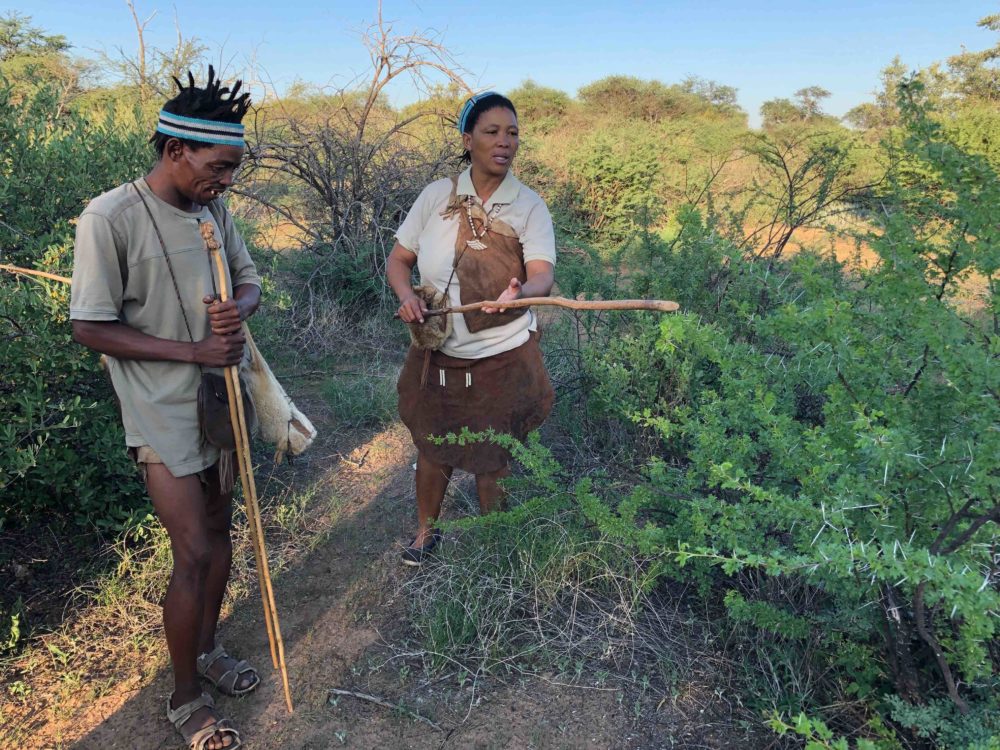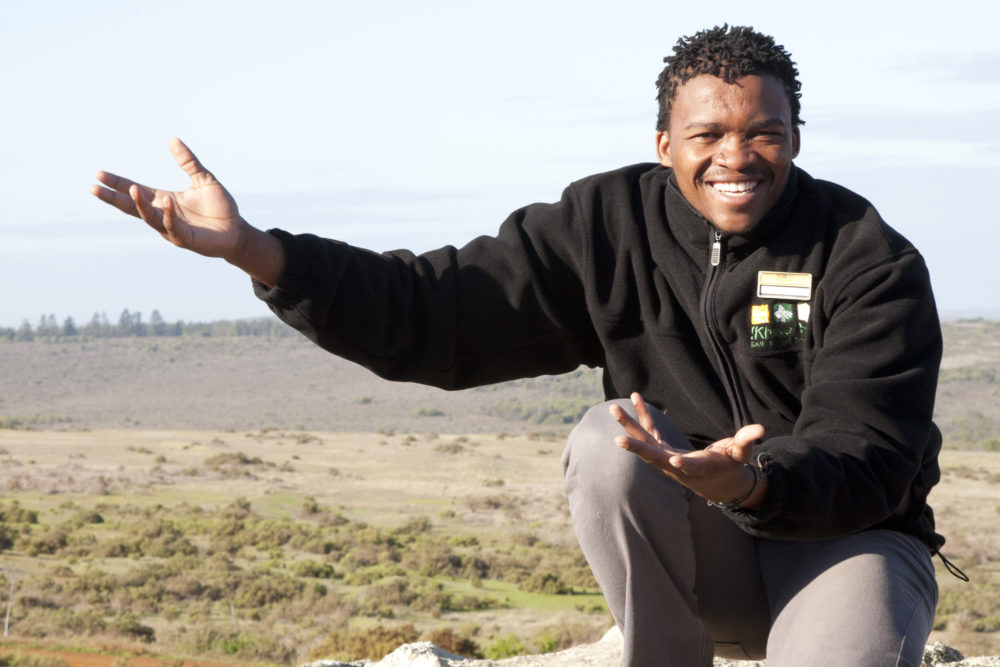SAN OF THE SOIL
-by Evie Ndlovu, Planeterra Regional Representative – East and Southern Africa
“We are more than clicks and small bushmen, we are some of the original historians.” – Darren, !Khwa Ttu San

What do you know about the San? If you are like me, you know what the media has shown you, or what the school textbooks have conveyed. Are they these small people, who speak only in clicks and run in nature, barefoot with small pouches and poisonous darts? Who are these ancient people who all over Southern Africa left painting within caves? Until recently, I had no idea that the San are more than what we learn in school or watch on TV, they are the originators of civilization on our continent and possibly the first historians. It took one trip to the !Khwa ttu San Cultural and Educational Centre to convince me that I needed to know more and to listen more when it comes to the plight of the San People.
Community tourism celebrating the San
With their population diminishing rapidly due to encroachment of their land, privatization of National Parks, forced modernization, and creation of inter-country borders, the San people of Southern Africa have decided to stand up and fight for their own, in their own way. Eleven tribes stretching between Cape Town, South Africa and Angola, have come together to economically benefit one another, while also preserving their culture and passing down their history to younger generations. After decades of receiving the short end of the socio-economic stick, the San have decided to take matters in their own hands and claim what is theirs. They have come together across Southern Africa and have taken ownership and pride in their uniqueness. Coming together to create tourism experiences and services in the region that serve as income generating sources, while also educating and advocating for the survival of their cultures. Such an experience is Dqae Qare San Lodge in Botswana, part of this network of San conservancies across Southern Africa.
The San culture, in particular, is suffering as modernization has watered down the cultural pride of the younger generations and the privatization of wildlife reserves drives them further from their home. In countries like Botswana, Namibia and Zimbabwe, the San are bound by international boundaries that dictate they pick a side, but that is not who they are. Only a few thousand San are left in the world, with one tribe having a known three members alive today. Only three. With them, stays the whole tribal culture, language and history; and tragically, many young people of San descent have been modernized or are unaware of their genealogy due to cultural dilution caused by colonialism. They do not believe in ownership and to them, all things belong to nature and must be respected. Nature has provided them with all they need for thousands of years and today, their survival is threatened.

The San people of Southern Africa, are more than “The Gods Must Be Crazy” references and documentary stereotypes. They are the people who bore civilization on our continent. In their core, the San, an endangered people, are storytellers and conservationists. Telling stories of where we came from and protecting our nature from where we are going. In Southern Africa, the San have decided to take matters in their own hands and counter their faced disappearance. Creating a community between South Africa, Namibia, Botswana, Zimbabwe and Angola, they have come together to preserve who they are and claim their seat at the economic table.
Over the course of modernization, and creation of borders and privatization of game reserves, the San have received the short end of the stick and have continuously been overlooked. They have been viewed as characters in the script of stereotypes – until now.


Post a comment